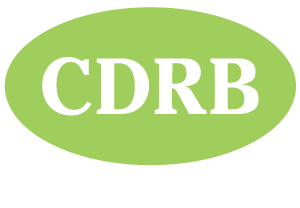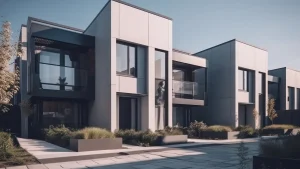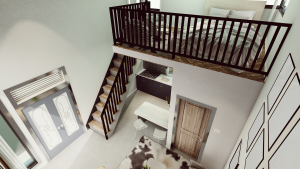The concept of the ‘smart home’ has evolved remarkably over recent years, morphing from a futuristic idea into a tangible reality.
Today’s architects are increasingly weaving smart technology into the very fabric of modern homes, creating spaces that are not only aesthetically pleasing but highly functional.
As we stand on the brink of a new era in residential architecture, it’s essential to explore how the integration of technology is reshaping our living environments.
This blog delves into the symbiotic relationship between smart technology and architectural design, highlighting how they collectively enhance our day-to-day lives.
The Concept of Smart Homes
A smart home represents the pinnacle of home automation and interconnected technology. It’s a dwelling equipped with a range of devices and systems that automate tasks, provide enhanced comfort, and offer improved energy efficiency.
These homes aren’t just about convenience; they’re about creating an ecosystem that responds to and anticipates the needs of its inhabitants.
At the heart of every smart home lies connectivity and automation.
From climate control systems that adjust temperatures based on occupancy to lighting that adapts to our daily routines, smart homes are revolutionising how we interact with our living spaces.
Technological Advances Shaping Smart Homes
The realm of smart homes is being continually reshaped by advancements in technology.
Artificial Intelligence (AI) and the Internet of Things (IoT) are at the forefront, enabling homes to learn from user behaviour and make autonomous adjustments for efficiency and comfort.
These technologies are manifesting in innovative devices like smart thermostats, which adjust heating and cooling based on real-time weather data, and intelligent security systems that provide unparalleled safety.
The fusion of these technologies is enhancing the functionality of homes and redefining the limits of architectural design.
Architectural Design and Smart Technology
Integrating smart technology into architecture goes beyond mere gadget installation. It requires a nuanced approach to design, considering factors like the placement of sensors, efficient wiring systems, and the seamless integration of devices without compromising the home’s aesthetic appeal.
This integration challenges architects to think creatively about space utilization. Rooms need to be designed with flexibility in mind, accommodating a variety of technological components while maintaining a homely atmosphere.
The result is a harmonious blend of form and function, where technology enhances the living experience without dominating it.
Benefits of Smart Homes
The most tangible benefit of smart homes is their energy efficiency. By intelligently managing resources like electricity and heating, these homes not only reduce utility bills but also contribute to a more sustainable environment.
The automated systems ensure that energy is used judiciously, reducing the carbon footprint of the household.
Moreover, smart homes offer enhanced security features, such as remote monitoring and automated locks, providing residents with peace of mind.
They also improve overall comfort and accessibility, allowing for customisable environments that cater to individual preferences and needs.
Challenges in Integrating Technology with Architecture
The integration of technology into architectural design is not without its challenges. Technical complexities often require the expertise of specialised professionals to ensure seamless incorporation.
Ensuring that technological elements do not overshadow architectural aesthetics is a delicate balance that requires careful planning and design.
Security and privacy are also paramount concerns in smart homes. As homes become more connected, the risk of data breaches and hacking increases.
Architects and developers must prioritise these aspects, ensuring that smart homes are not only efficient and comfortable but also secure and private sanctuaries for their inhabitants.
Future Trends
Looking ahead, the future of smart homes is bright and brimming with possibilities. Emerging technologies, such as augmented reality and more advanced AI, are set to revolutionise further the way we live.
These advancements promise even greater automation, efficiency, and personalisation in home design.
These trends suggest a future where our homes will not only be living spaces but intelligent partners in our day-to-day lives.
From homes that adapt to our health needs to spaces that change with our moods, the potential for smart technology in architecture is boundless.
Conclusion
In conclusion, integrating smart technology into architecture is more than a trend; it’s a significant shift in how we conceive and interact with our living spaces.
As technology continues to evolve, so too will the capabilities of our homes, offering unparalleled levels of comfort, efficiency, and security.
The future of smart homes is a fusion of innovation and practicality, where technology and architecture work in unison to create environments that are not just buildings, but intelligent, responsive homes that enhance every aspect of our daily lives.
Get in touch with us today if you need an architect.







